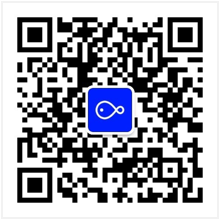读光-表格结构识别-有线表格
有线表格结构识别,输入图像,检测出单元格bbox并将其拼接起来得到精准而完整的表格。
- 模型资讯

- 模型资料
Cycle-CenterNet表格结构识别模型介绍
表格结构识别,即给定一张图片,检测出图中单元格的物理坐标(四个顶点)以及逻辑坐标(行号列号)。
模型描述
本模型是以自底向上的方式: 1)基于单元格中心点回归出到4个顶点的距离,解码出单元格bbox;同时基于单元格顶点,回归出到共用该顶点的单元格的中心点距离,解码出gbox。2)基于gbox(group box),将离散的bbox拼接起来得到精准完整的电子表格;3)第二步的拼接将单元格从“离散”变为“连续”,因此用后处理算法获得单元格的行列信息。目前上线模型实现前两步的功能,第三步暂时未提供。Cycle-CenterNet模型介绍,详见:Parsing Table Structures in the Wild 。

期望模型使用方式以及适用范围
本模型主要用于给输入图片输出图中表格单元格拼接后的物理坐标,具体地,模型输出的框的坐标为单元格的四个角点的坐标,左上角为第一个点,按照顺时针的顺序依次输出各个点的坐标,分别为(x1,y1)(x2,y2)(x3,y3)(x4,y4)。用户可以自行尝试各种输入图片。具体调用方式请参考代码示例。
如何使用
在安装完成ModelScope之后即可使用table-recognition的能力。
预处理和后处理
测试时的主要预处理和后处理如下:
- Resize Pad(预处理): 输入图片长边resize到1024,短边等比例缩放,并且补pad到长短边相等。同时有减均值除方差等归一化操作。
- 表格拼接(后处理):基于模型推理的gbox,将离散bbox拼接起来得到完整表格。
代码范例
from modelscope.pipelines import pipeline
from modelscope.utils.constant import Tasks
table_recognition = pipeline(Tasks.table_recognition, model='damo/cv_dla34_table-structure-recognition_cycle-centernet')
result = table_recognition('https://modelscope.oss-cn-beijing.aliyuncs.com/test/images/table_recognition.jpg')
print(result)
模型局限性以及可能的偏差
- 模型主要用于有线表格,无线表格不支持
训练数据介绍
本模型训练数据为WTW,训练集为10970张。
模型训练流程
本模型利用imagenet预训练参数进行初始化,然后在训练数据集上进行训练。
相关论文以及引用信息
如果我们的模型对您有帮助,请您引用我们的文章:
@inproceedings{long2021parsing,
title={Parsing table structures in the wild},
author={Long, Rujiao and Wang, Wen and Xue, Nan and Gao, Feiyu and Yang, Zhibo and Wang, Yongpan and Xia, Gui-Song},
booktitle={Proceedings of the IEEE/CVF International Conference on Computer Vision},
pages={944--952},
year={2021}
}




